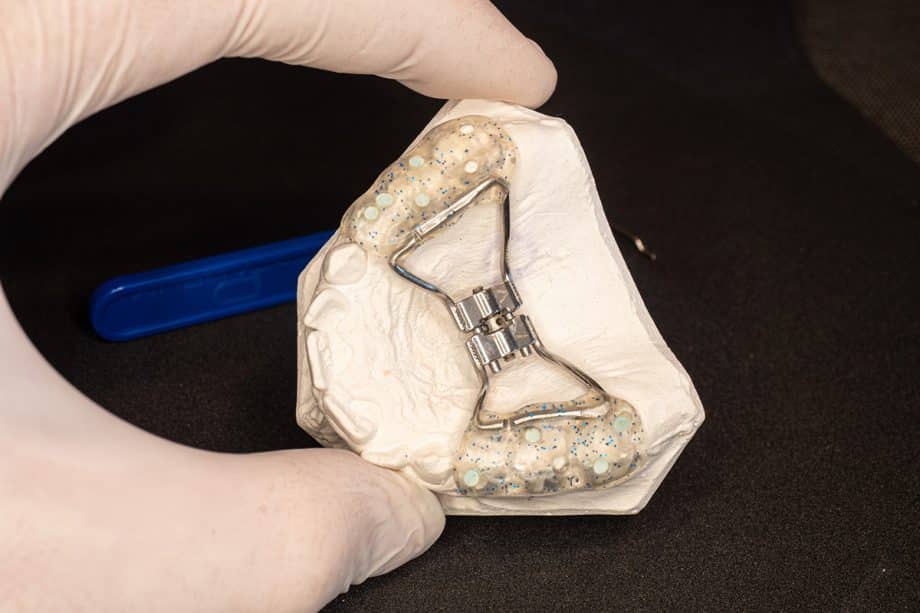Palate expanders or dental arch expanders are orthodontic appliances that can be used with some specific malocclusion and they have certain indications. Most kids will NOT need an expander. Misuse of expanders might lead to undesired consequences and complicate cases and make treatment longer and harder. Here’s what to know about palate expanders for kids.
Why Would a Child Need an Expander?
A palate expander is an interceptive orthodontic treatment. It can be used for children with a narrow upper arch due to palatal inclination of posterior teeth to upright those teeth and to develop the upper arch to a normal arch shape.
There are several types of palatal expanders. They can be removable or fixed (cemented). Sometimes TADs (temporary anchorage devices) are added to the cemented expander. Adding TADs to the fixed palatal expanders is recommended in cases where separation of the upper palatal shelves is really needed to widen a skeletally narrow upper arch to improve breathing and to provide more space for the tongue. Regular expanders are recommended to upright palatally inclined posterior teeth.
There are other orthodontic devices/ appliances to develop dental arches for children, teenagers and adults.
We recommend children to visit our office for their first orthodontic exam no later than seven years old according to the recommendation of the American Association of Orthodontics. We provide preventive and interceptive orthodontics. Children will benefit from early diagnosis in the following cases
- Crowded teeth
- Overlapping teeth
- Impacted teeth
- Overbite
- Underbite
- Crossbite
- Speech difficulties
- Breathing difficulties
- Chewing difficulties
- Thumbsucking
- Tongue thrust
The most common reason that a child would need a PED is a crossbite. A crossbite occurs when one or more of the upper teeth fit inside the lower teeth. Crossbites are most often inherited, skeletal conditions, although habits such as prolonged pacifier use, finger sucking, or thumb sucking may lead to a crossbite.
How Palate Expanders Work
There are several different types of palate expanders and they are all custom-made to fit the patient. The device has two halves, each of which will attach to teeth in the back of the mouth.
The two halves are joined in the middle of the palate with a screw. Parents will receive a tiny “key” that when inserted into the screw in the middle, gently expands the device to widen the upper jaw. This causes the palatal bones to move apart and promotes the growth of new bone. The jaw is typically widened within just a few months.
Benefits of Palate Expanders for Kids Who Need Them
A palate expander can prevent a host of oral health problems that may arise from a narrow dental arch. Children with a narrow dental arch may develop sleep-disordered breathing conditions such as obstructive sleep apnea, from a restricted airway. Widening the upper arch can keep the airway open.
Book an Early Orthodontic Appointment for Your Child in Lewisville, TX
The majority of children will not need a palate expander. However, all children should see an orthodontics provider by age 7 to begin early orthodontic treatment–if necessary– to ensure proper development of the teeth and jaw and to prevent the need for more complex orthodontic treatment later in life. To book an orthodontic consultation at Castle Hills 3D Orthodontics, call 469-598-1700 or send us a message.
Frequently Asked Questions
Will a palate expander hurt my child?
The devices can cause a sensation of pressure, which can be uncomfortable. However, the discomfort is typically short-lived and can be managed with an over-the-counter medication your doctor will recommend.
Can my child eat normally if they have a palate expander?
Your child will need to avoid gummy, chewy, and sticky foods while they have the palate expander. If your child is experiencing discomfort due to the expansion, avoid hard, tough, or crunchy foods until the discomfort subsides.

